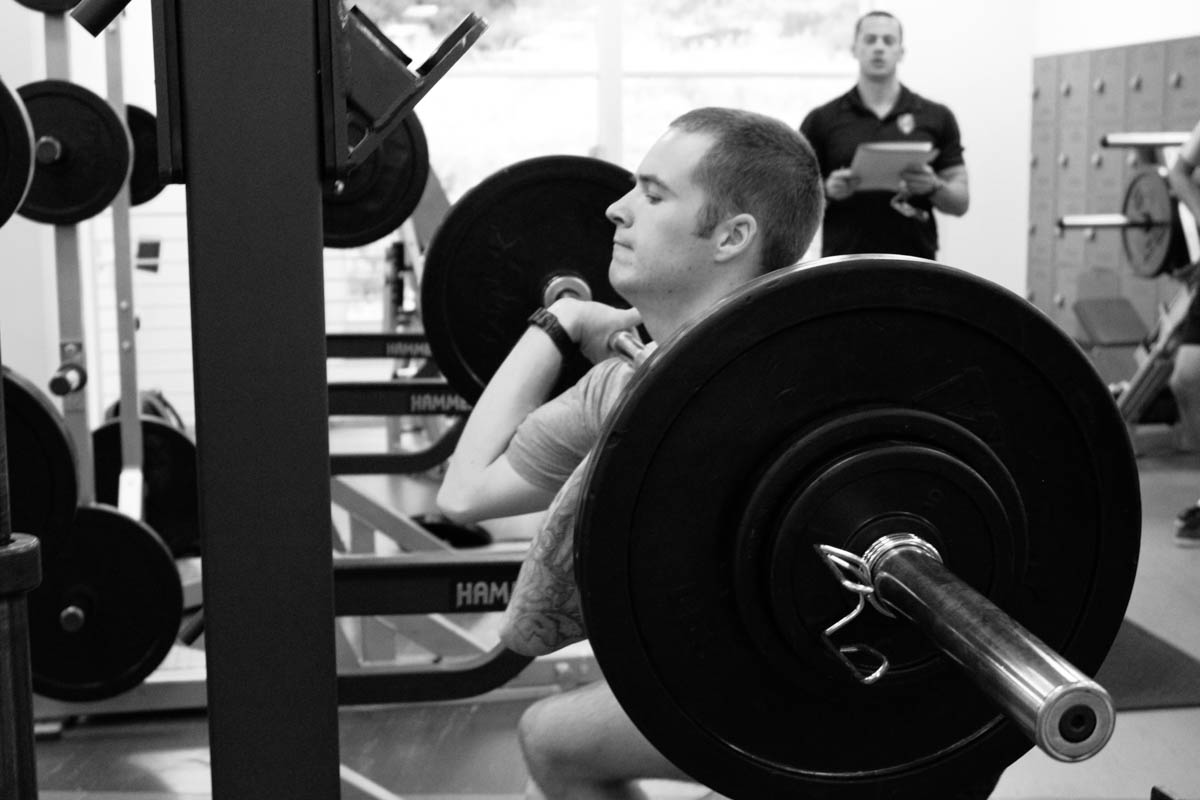By Adam Scott, MS, CSCS
In September 2015, Mountain Tactical Institute (MTI) had the pleasure of completing the first phase of our official Ruck Deep Dive Study. We traveled to Colorado Springs and tested a total of 46 ROTC Cadets from the University of Colorado, Colorado Springs.
This article was written immediately after to provide a brief update on the initial results. So it only covers a few of the tested events, as the data was still being processed. Dr. Kristen Ouellette from Springfield University has since analyzed the complete data set and published the official results in a peer-reviewed academic journal.
Study Design:
Testing took place over four days. During the first day, September 1st, cadets completed an official Army Physical Fitness Test. This included a 2-minute push-up test, 2-minute sit-up test and 2-mile run. Two days later, on September 3rd, MTI tested the cadets on 1RM front squat, 1RM bench press, and max rep body weight pull-ups. The following day, September 4th, the cadets completed a timed 10km ruck with 29kg (63.9lb.).
Subjects:
A total of 46 ROTC cadets participated in our testing. Of the 46 cadets, 36 completed all seven testing events.
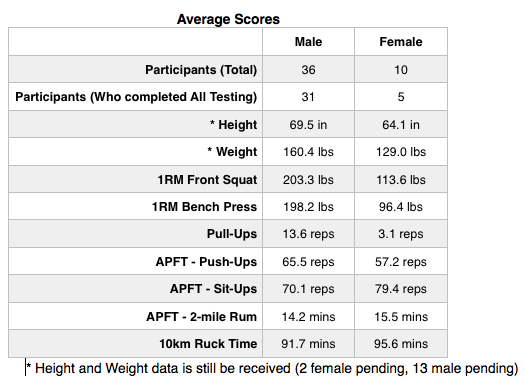
Initial Results:
Our first step in examining the initial data was to run simple correlations between each variable and the cadet’s 10km ruck performance.
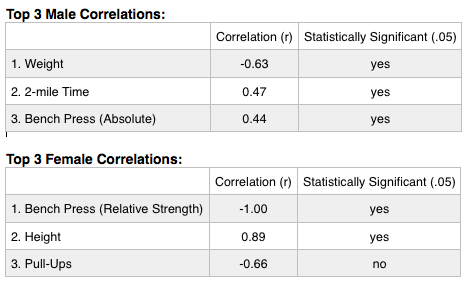
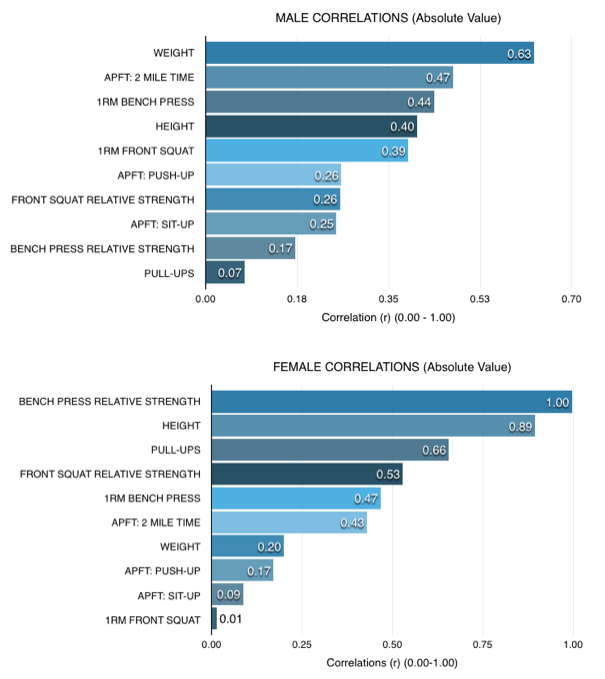
Next, using IBM Watson Analytics, we ran linear regression Analysis of Variance (ANOVA) tests to analyze the results further. These analytics included tests for single variables and combinations. The diagrams below show the predictive effects of each of the variables we examined. The closer the variable (or variables) are to the center bullseye, the stronger the effect.
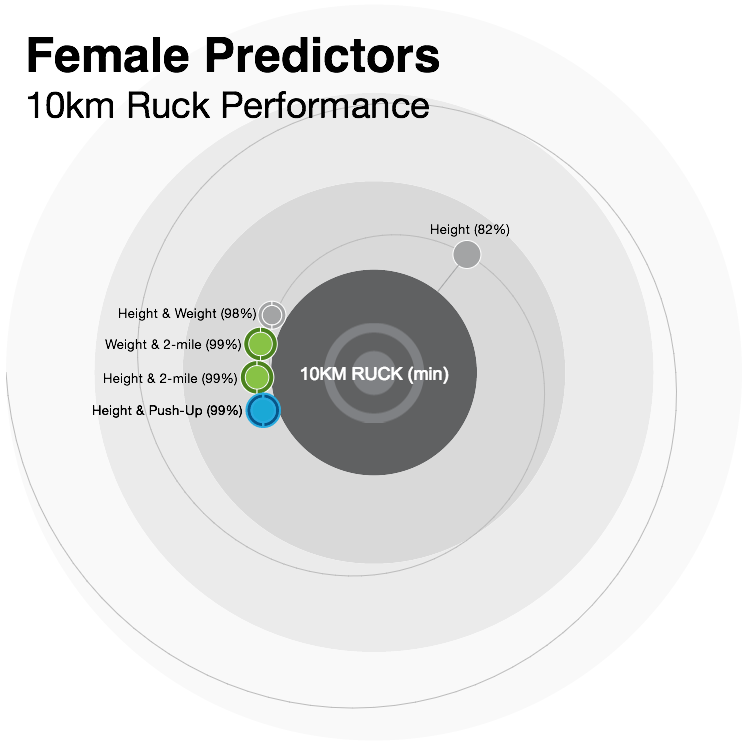
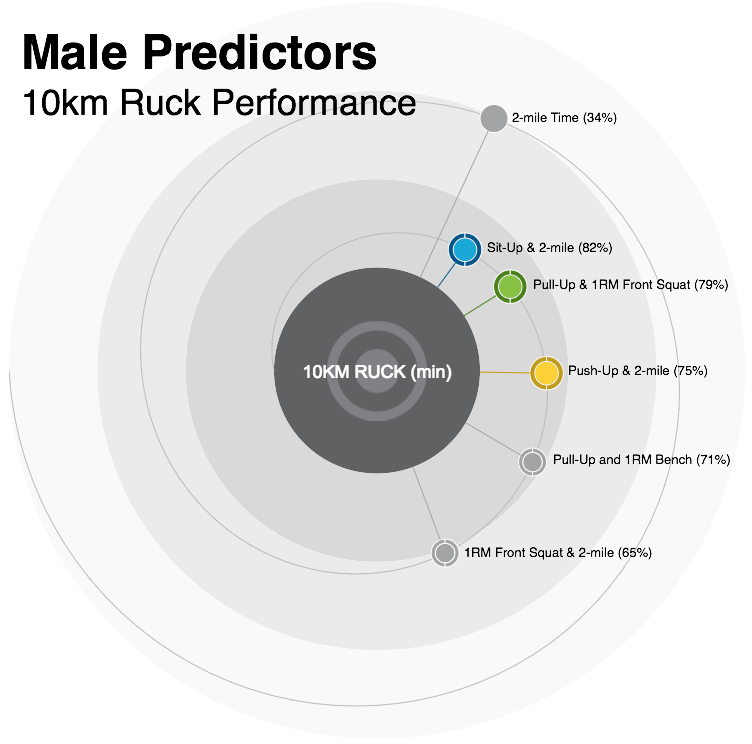 The ANOVA test analytics revealed two single variables which were predictive of rucking performance. For males that variable was 2-Mile Run Time (34%) and for females it was Height (82%). However, for both males and females, combining variables created far greater 10km ruck performance predictive effects. This can be seen in the diagram above and the table below:
The ANOVA test analytics revealed two single variables which were predictive of rucking performance. For males that variable was 2-Mile Run Time (34%) and for females it was Height (82%). However, for both males and females, combining variables created far greater 10km ruck performance predictive effects. This can be seen in the diagram above and the table below:
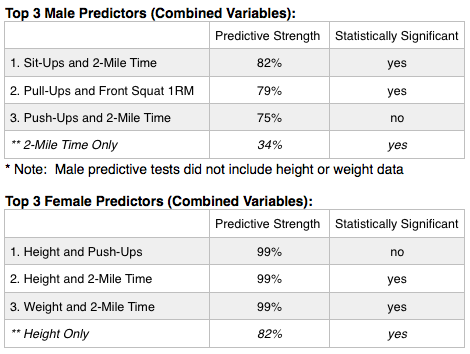

Initial Impressions:
With data still pending I want to stress the “initial” part of these observations. I also want to point out the relatively homogenous sample and small population of females. However, with that said, here are some initial impressions:
Females:
- Rucking performance seems highly dependent on size – height and weight. Although, I will point out that our fastest female ruck performer was the shortest and lightest.
- After size, relative, bodyweight strength (push-ups, pull-ups, etc.) seemed to be highly related to rucking based on correlations.
- A combination of size and aerobic capacity (2-mile run time) seemed to be the best predictor of rucking performance in females.
- Interesting, relative upper body strength (measured by bench press 1RM divided by body weight) was almost perfectly correlated with ruck performance while relative lower body strength (measured by front squat 1RM divided by body weight) had the lowest correlation.
Males:
(Reminder, we weren’t able to use height and weight in our ANOVA tests. This also eliminated our ability to look at the predictive qualities of relative strength (1RMs divided by body weight). Thus, the impressions below are based mostly on the other variables.)
- Ruck performance correlations and predictions were far more distributed among multiple variables in males than in females.
- Cadet 2-mile times (our measure for aerobic capacity) seemed to be themost predictive measure in rucking performance (and the only single measure to produce a predictive measure).
- Interestingly, the APFT events seemed fairly predictive of rucking performance. A combination of 2-mile time and sit-ups had a predictive strength of 82%. A combination of 2-mile time and push-ups had a predictive strength of 75%.
- The fact that weight was the most highly correlated measure to male rucking performance was interesting, but since we are still waiting on 13 subject weights I think any discussion on the matter would be premature.
What’s next:
The UCCS ROTC cadets are participating in a Military Athlete Training Program preparing them for the Cadet Ranger Challenge.
It would also be great to replicate the UCCS test with another unit to see how their results compare. So, if you are interested in participating, contact: rob@mtntactical.com
Ruck Deep Dive – Study #2: Best Ways to Improve Rucking

